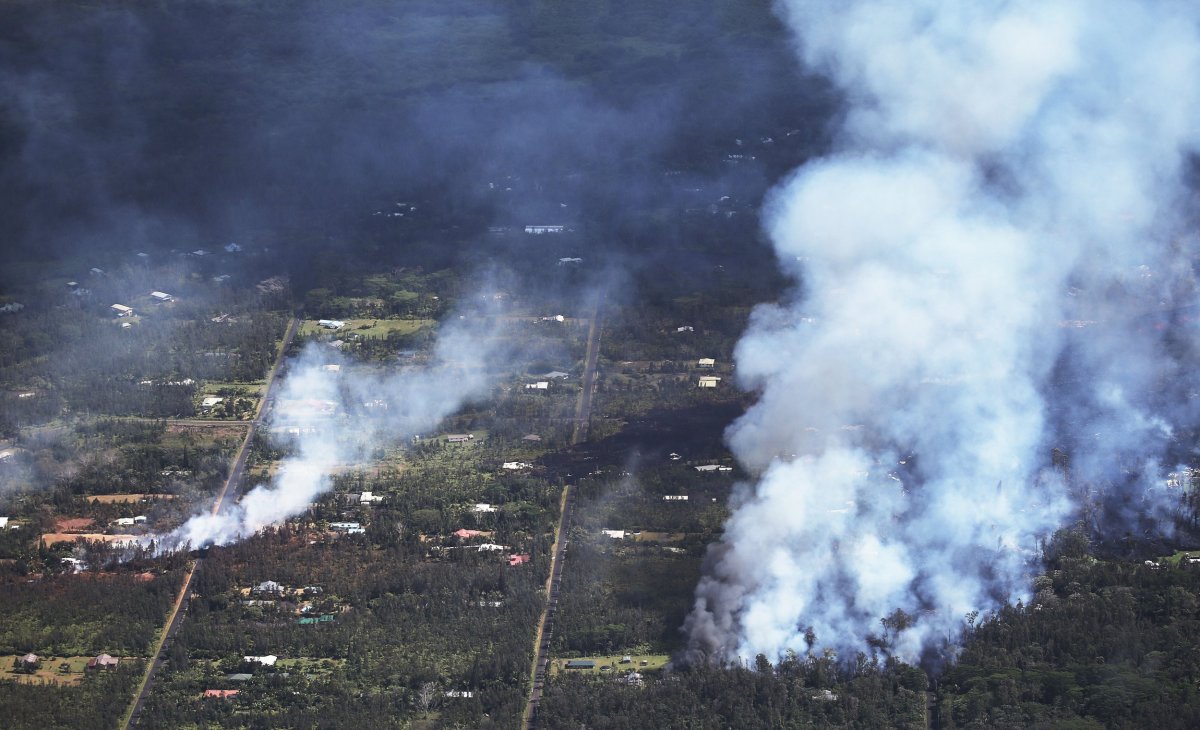The Kilauea volcano in Hawaii has been leaking lava since Thursday through a series of 10 fissures above the surface, including several in a residential subdivision called Leilani Estates. Hawaii's civil defense service said 26 homes had been destroyed by the eruption as of Sunday evening.
In addition to lava flows and earthquakes, Kilauea is also producing large amounts of sulfur dioxide gas. That gas mixes with other chemicals like carbon dioxide and water to cause what scientists call volcanic smog, or vog, which is dangerous to breathe in high quantities.
"Volcanic gas is coming out of these fissure vents at very high concentrations," Tina Neal, the scientist in charge of the U.S. Geological Survey observatory monitoring volcanoes in Hawaii, said at a press conference. Chemicals produced by burning asphalt and homes are further reducing local air quality, she said.
Read more: Decades-long Kilauea Eruption May Solve Volcanic Lava Mystery
Volcanic smog can cause respiratory problems and irritate skin and mucous membranes. Symptoms of exposure include watery eyes, headaches and having trouble breathing. Like normal smog, it can also reduce visibility on roads.
Vog has been a problem at Kilauea since the eruption at the volcano's summit began in 2008, Neal told Newsweek in December, before the current eruption at Leilani Estates started. The sulfur dioxide is produced as rock melts within the volcano's plumbing system.

A public health study run near Kilauea after the summit started increasing eruption activity in 2008 found that exposure to volcanic smog was associated with doctor's visits for coughs, headaches and trouble breathing.
According to Hawaii's emergency management system, commercially available masks don't protect users from sulfur dioxide. Certain air filters can help, but at higher concentrations, leaving the area is the only option to reduce exposure.
Although the lava is a clear threat, the air quality is also a key reason why Leilani Estates has been under evacuation orders since Thursday. A neighboring subdivision that has not yet seen lava influxes was also evacuated on Friday in part due to air quality concerns.
Scientists are monitoring sulfur dioxide production by Kilauea, as well as tracking earthquakes, lava flows and other geologic characteristics of the volcano.
Uncommon Knowledge
Newsweek is committed to challenging conventional wisdom and finding connections in the search for common ground.
Newsweek is committed to challenging conventional wisdom and finding connections in the search for common ground.
About the writer
Meghan Bartels is a science journalist based in New York City who covers the science happening on the surface of ... Read more
To read how Newsweek uses AI as a newsroom tool, Click here.








